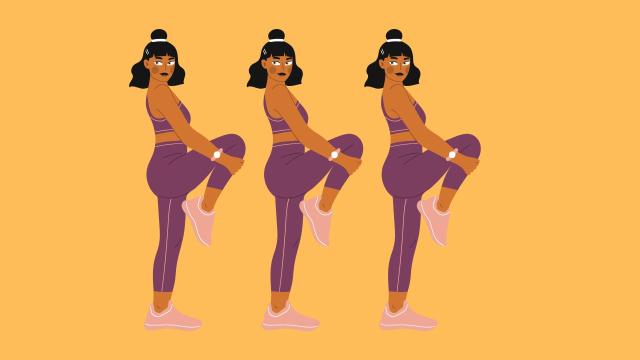Ahead of the Real Insurance Sydney Harbour 10K and 5K, Aussie Olympian Ben St Lawrence hosted a small run workshop with the Australian Cancer Research Foundation. The event was mostly a chance to test out running fitness before race day (my results were found wanting), but it also offered an opportunity to pick the brain of a seasoned long-distance runner.
After recovering from our “relaxed” run, I asked St Lawrence for his thoughts on running warm ups and cool downs and why they’re both so important to get right.
How to warm up before your run
When it comes to preparing for a run, St Lawrence shared that he personally likes a warm up that consists of “dynamic” stretches. “There are some static stretches that I do for my particular tight areas, like I do some pigeon stretches for my glutes…but I prefer dynamic stuff.”
He recommended giving leg swings and toe walks a try. But one area that he believes all people “probably do need to stretch would be hip flexors, just if people are working at a desk all day…”
“I don’t like people getting straight out of the car or straight out of a desk and going straight into running. I do like a bit of a five minute dynamic warm up [first]”.
“It just warms things up, improves range of motion and just minimises the risk of pulling a muscle. So, a little bit of a walk, some of those activation exercises and a very slow jog to start with, I think is a good warm up,” he said.
How about the cool down?
Okay so you’ve warmed up well, you’ve smashed out your run, what comes after that?
Well, St Lawerence shared that if it’s a particularly tough session, he actually likes to go for “a jog afterwards,” but the thing he places most focus on post-run is “refuelling”.
“For me, afterwards it’s about refuelling, so protein; carbs; rehydration and then, if I get home, I might then do some work on a foam roller if I feel something’s been really tight,” he said.
“People say, ‘what’s the best tip for not getting sore after running’ and that’s prior preparation. So, I think a good progressive training plan is the best injury prevention you can have. There are ice baths and massages — all that stuff is really good but they’re little one percenters and just a good progressive training plan is the key.”
If you want to get started on your hip mobility now, here are some stretches you can try out before your next run.

Leave a Reply
You must be logged in to post a comment.